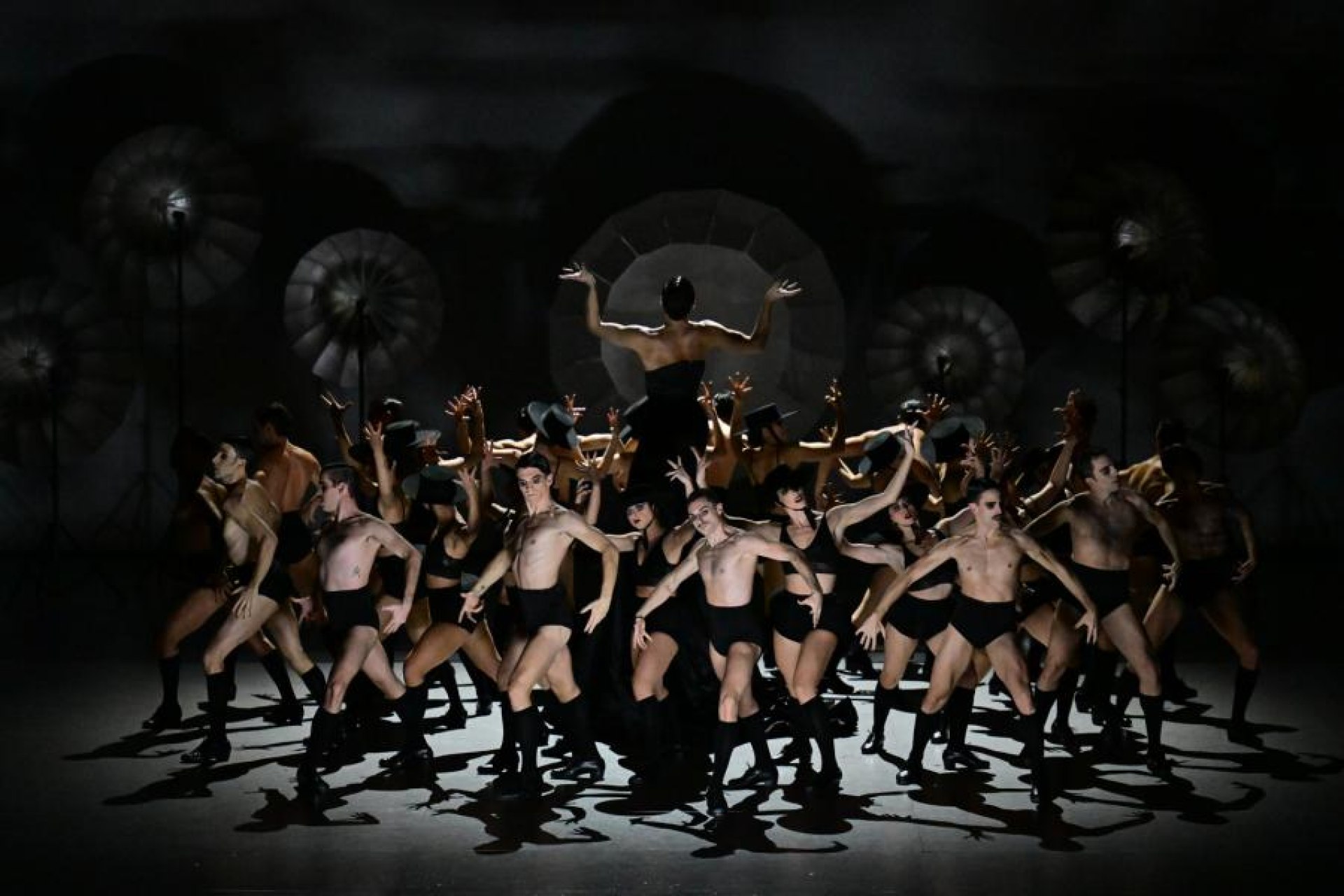Ballet Nacional de España
October 2024 | ||||||
|---|---|---|---|---|---|---|
Mo | Tu | We | Th | Fr | Sa | Su |
Afanador
Flamenco and dance with the work of photographer Ruvén Afanador
Sacrifice
Daggers brandished And gutted sorrow with craft A mourning like the flesh of a beast Just bled in the field. Still warm with death You let out a long cry, of slaughter And then, nothing: only small gasps Trickling down the neck And crusting at the thresholds From outside in A violent mirror spreading Pooling within you.
Míriam Cano
The Ballet Nacional de España presents at the Gran Teatre del Liceu a proposal signed by Marcos Morau. The challenge is to put a specific gaze into motion and reconcile in a flamenco and dance show the work of the Colombian fashion photographer Ruvén Afanador. Known for his portraits of celebrities from the world of cinema and music, Afanador has a close relationship with flamenco —he has dedicated two books to it (Ángel gitano and Mil besos)— and in 2008 he created the poster for the Bienal de Flamenco.
Breaking the rigid boundaries that separate artistic disciplines, choreographer Marcos Morau, director of the company La Veronal and National Dance Award winner 2013, works with the photographer’s ability “to create characters by modeling real people” and his creativity to generate worlds “that arise from the beauty of light and shadows,” to create a show that draws from his photographic approach to flamenco and on how a creator outside of flamenco and its surrounding culture falls in love with its aesthetics and is seduced by its “direct and sharp as a razor blade” language, Morau explains.
This is, therefore, an exercise in hybridizing two languages, photography and dance, in search of “a new universe,” building new imaginaries from the perspective of another creator in an exercise of respect and fascination.
The Ballet Nacional de España, directed by Sevillian Rubén Olmo, dances this visual flamenco of Ruvén Afanador. In Morau's words, “flamenco has this joy with echoes of lament or this lament with echoes of joy that celebrates life. In Andalusia and in flamenco, Afanador finds a refuge, a home for those who are never at home. Through his camera, he fixes and deforms it, creating a gesture, a light that contains a powerful truth, a radical beauty and darkness that we cannot stop looking at.”
A work from Morau's perspective to place Afanador’s characters in the context of his own work and give movement to photography. To bring them to life and make them coexist with contemporaneity, as the past coexists with the present, and to keep discovering new forms.
Program and cast
Approximate duration: 1h 45min
IDEA AND ARTISTIC DIRECTION: Marcos Morau
CHOREOGRAPHY: Marcos Morau & La Veronal, Lorena Nogal, Shay Partush, and Jon López
DRAMATURGY: Roberto Fratini
SET DESIGN: Max Glaenzel
COSTUME DESIGN: Silvia Delagneau
MUSICAL COMPOSITION: Cristóbal Saavedra
LIGHTING DESIGN: Bernat Jansà
AUDIOVISUAL DESIGN: Marc Salicrú
PHOTOGRAPHY: Ruvén Afanador
Gran Teatre del Liceu
Barcelona's opera house, the Gran Teatre del Liceu, was founded on the Rambla in 1847 and has continued over the years to fulfil its role as a culture and arts centre and one of the symbols of the city.
Today it is publicly-owned (by the Government of Catalonia, Barcelona City Council, Barcelona Provincial Council and the Ministerio de Educación, Cultura y Deporte) and administered by the Fundació del Gran Teatre del Liceu which, in addition to the aforementioned bodies, incorporates the Patronage Council and the Societat del Gran Teatre del Liceu (the old society of owners).
Origins: From 1837 to 1847
The Liceu evolved out of the Sociedad Dramática de Aficionados (Society of theatre-lovers) set up in 1837 at the instigation of Manuel Gibert in the former convent of Montsió by members of the National Militia, an organization of armed citizens with liberal leanings.
Barcelona's economy and population were growing fast at the time and the city needed a music conservatory. This led to the conversion of the Sociedad Dramática into the Liceo Filármonico Dramático Barcelonés de S.M. la Reina Isabel II (Barcelona Dramatic and Philharmonic Lyceum of HM Queen Isabel II). In addition to its theatrical activities, the new organization cultivated Italian-style singing and music.
The building on the Rambla
The original building was solemnly opened on 4 April 1847. The plans had been drawn up by Miquel Garriga i Roca, subsequently assisted by Josep Oriol Mestres. The project was funded by selling shares, which meant that many of the boxes and seats were to be privately owned. The shareholders formed the Societat del Gran Teatre del Liceu, known as the “Societat de Propietaris” (Society of Owners), which was in sole charge of running the Gran Teatre del Liceu from 1855 onwards, after it was legally separated from the Conservatori del Gran Teatre del Liceu.
The theatre was operated by impresarios who were given a concession to stage a specific number of productions in exchange for the proceeds from the sale of tickets not reserved for the Societat itself. This system was to endure until 1980.
The creation of the Consortium
By the last quarter of the 20th century this management system was no longer viable. In 1980, to avert the danger of the disappearance of an institution of such worldwide cultural renown, the Generalitat Catalonia's first government in modern times – set up a consortium, the Consorci del Gran Teatre del Liceu, which also incorporated Barcelona City Council and the Societat del Gran Teatre del Liceu. Barcelona Provincial Council joined the Consortium in 1985, followed by the Spanish Ministry of Culture in 1986. From then on the Consortium took over operation of the theatre.
Performances: Fr 27 Dec 2024,

 EN
EN DE
DE IT
IT FR
FR ES
ES RU
RU JP
JP RO
RO


